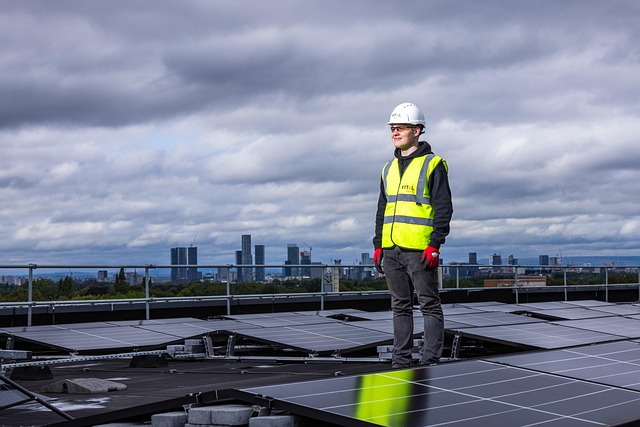Greening Our Cities: Urban Planning and Renewable Energy
The rapid urbanization witnessed in the 21st century has brought with it a plethora of challenges, including heightened pollution levels, increased energy demand, and a decline in overall quality of life. As cities burgeon and the global population trends towards becoming more urbanized, it is pivotal that urban planning integrates sustainability into its framework. One of the most integral components of sustainable urban planning is the harnessing of renewable energy resources to create greener, more resilient cities. This article explores the intersection of urban planning and renewable energy, outlining innovative strategies that can facilitate the greening of urban environments.
The Importance of Sustainable Urban Planning
Sustainable urban planning refers to the practice of designing urban spaces with consideration for environmental, social, and economic factors. The concept extends to ensuring that cities can operate efficiently, minimizing their carbon footprint while enhancing the quality of life for their inhabitants. As cities consume over two-thirds of the world’s energy and account for more than 70% of CO2 emissions, the urgency for sustainable practices cannot be overstated.
By harmonizing human activity with the natural environment, sustainable urban planning seeks to mitigate adverse environmental impacts while promoting social cohesion and economic viability. This approach not only contributes to climate change mitigation but also ensures that urban spaces are livable and equitable.
Renewable Energy: A Key Component
At the heart of greening our cities is the shift from traditional fossil fuels to renewable energy sources such as solar, wind, hydroelectric, and geothermal power. The transition to renewable energy is crucial for cities to achieve energy independence, lower greenhouse gas emissions, and reduce air pollution.
Solar Power
Solar energy offers an abundant and largely untapped resource for cities. By installing solar panels on residential, commercial, and municipal buildings, urban areas can significantly offset their energy consumption. Solar photovoltaic systems, particularly when combined with battery storage solutions, create a resilient and sustainable energy model, enabling cities to harness energy during peak hours and store excess for later use.
Wind Energy
Urban wind systems, such as small-scale wind turbines, can contribute to a city’s energy needs without requiring vast expanses of land. Innovations in turbine design allow for installations that blend seamlessly into urban architecture. The integration of wind energy into urban environments can yield substantial energy savings and foster community ownership of renewable resources.
Hydroelectric Power
Although conventional hydroelectric plants may not be feasible in densely populated areas, micro-hydropower systems can be utilized in urban settings. Utilizing existing infrastructures such as water distribution systems and canals can generate clean energy. This approach illustrates that innovative solutions can leverage local resources while minimizing ecological disruption.
Geothermal Energy
Geothermal energy can play a crucial role in meeting heating and cooling demands in urban areas. Utilizing the earth’s consistent temperatures, geothermal systems can provide efficient climate control solutions for residential and commercial buildings. Furthermore, district heating systems powered by geothermal energy can reduce fossil fuel reliance in dense urban environments.
Integrating Renewable Energy into Urban Planning
To effectively integrate renewable energy into urban planning, policies and practices must adapt to accommodate sustainable technologies and practices. Urban planners, architects, and policy-makers must collaborate to create frameworks that support the seamless incorporation of renewable energy solutions.
Designing for Energy Efficiency
Energy-efficient design is a cornerstone of sustainable urban planning. Buildings must be designed to minimize energy consumption through appropriate insulation, ventilation, and the use of energy-efficient appliances. Passive solar design, which utilizes natural light and heat, can dramatically reduce reliance on artificial heating and cooling systems.
Incentivizing Renewable Energy Adoption
Governments play a critical role in fostering the adoption of renewable energy through incentives, grants, and tax breaks. Policymakers can establish programs to encourage both businesses and residents to transition to renewable sources, thereby facilitating sustainable urban development. This can include funding for solar panels, energy-efficient renovations, and community renewable projects.
Creating Renewable Energy Zones
Identifying specific geographic areas within urban settings where renewable energy projects can be concentrated is essential. Establishing Renewable Energy Zones (REZs) allows for streamlined permitting, reduced regulatory barriers, and the optimization of resource management. These designated zones can be utilized for solar farms, wind parks, or community energy initiatives, fostering local energy generation and resilience.
Community Engagement and Education
Inviting community members to participate in the planning and decision-making processes enhances the effectiveness and acceptance of energy projects. Public awareness campaigns and educational programs about the benefits of renewable energy can empower individuals to advocate for sustainable initiatives within their communities. An informed citizenry is essential for cultivating a culture of sustainability in urban environments.
Challenges to Implementation
While the potential benefits of integrating renewable energy into urban planning are clear, various challenges persist. The transition to a greener urban landscape necessitates overcoming technological, financial, and behavioral barriers. Regulating energy markets, addressing zoning laws, and financing renewable projects represent just a few of the hurdles that need navigating.
Technological Barriers
Despite advancements in renewable energy technology, cities often grapple with integrating innovative solutions into their existing infrastructure. Outdated grids, insufficient storage capabilities, and the need for smart technologies can hinder the transition. Addressing these technological barriers is essential for creating a resilient energy framework within urban environments.
Financial Constraints
Investing in renewable energy solutions can require significant upfront costs, which may deter municipalities from pursuing ambitious sustainability initiatives. Securing funding—whether through public-private partnerships, grants, or innovative financing models—is crucial for implementing renewable projects and realizing the economic benefits of a greener infrastructure.
Behavioral Factors
Public perception and behavior towards renewable energy play a critical role in its adoption. Cultural attitudes, misinformation, and a lack of familiarity with sustainable technologies can influence acceptance rates. Community engagement and education efforts are vital to shift narrative towards the advantages of renewables, fostering a more sustainable mindset amongst the public.
Case Studies: Successful Integration of Renewable Energy in Urban Planning
Several cities across the globe have successfully navigated the intersection of urban planning and renewable energy, serving as examples of innovative practices that others can emulate.
Copenhagen, Denmark
Copenhagen is widely regarded as a leader in sustainable urban development. The city has committed to being carbon neutral by 2025. This ambitious goal is supported by harnessing wind energy, optimizing public transportation with electric buses, and promoting cycling as a preferred mode of transport. Furthermore, extensive investment in district heating systems powered by renewable energy has significantly reduced carbon emissions while improving urban livability.
San Diego, California, USA
The City of San Diego has adopted a bold Climate Action Plan with a vision to derive 100% of its energy from renewable sources by 2035. The plan emphasizes energy efficiency, solar power adoption, and the diversification of renewable energy production. By incorporating community input into the planning process and fostering collaborations with local organizations, San Diego aims to create lasting change and resilience in its urban framework.
Freiburg, Germany
Freiburg is a prime example of how urban planning can effectively integrate renewable energy solutions. The city has implemented innovative solar initiatives, incentivizing the installation of photovoltaic systems on residential buildings. Its extensive public transportation system and commitment to green spaces further demonstrate the successful incorporation of sustainability principles into urban planning.
The Future of Greener Urban Landscapes
As urban populations continue to rise, the need for sustainable and resilient cities becomes increasingly pressing. The greening of our cities through innovative urban planning and the adoption of renewable energy solutions is not just an environmental imperative but a crucial step towards social equity and economic prosperity.
The synergy between urban planning and renewable energy lays the groundwork for a future where cities thrive without compromising the health of our planet. As cities across the globe embrace this transition, the potential for positive change is boundless, promising healthier, more vibrant communities for generations to come.
Conclusion
Greening our cities through the integration of renewable energy into urban planning is key to combating climate change and enhancing urban livability. By implementing sustainable practices and fostering collaboration among stakeholders, we can reshape our urban landscapes into resilient, thriving ecosystems. The vision of cities powered by clean, renewable energy is not a distant dream; it is a tangible goal that beckons our collective action and commitment today.



